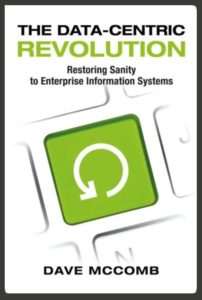My book “The Data-Centric Revolution” will be out this summer. I will also be presenting at Dataversity’s Data Architecture Summit coming up in a few months. Both exercises reminded me that Data-Centric is not a simple technology upgrade. It’s going to take a great deal more to shift the status quo.
months. Both exercises reminded me that Data-Centric is not a simple technology upgrade. It’s going to take a great deal more to shift the status quo.
Let’s start with Lawyers, Guns and Money, and then see what else we need.
A quick recap for those who just dropped in: The Data-Centric Revolution is the recognition that maintaining the status quo on enterprise information system implementation is a tragic downward spiral. Almost every ERP, Legacy Modernization, MDM, or you name it project is coming in at ever higher costs and making the overall situation worse.
We call the status quo the “application-centric quagmire.” The application-centric aspect stems from the observation that many business problems turn into IT projects, most of which end up with building, buying, or renting (Software as a Service) a new application system. Each new application system comes with its own, arbitrarily different data model, which adds to the pile of existing application data models, further compounding the complexity, upping the integration tax, and inadvertently entrenching the legacy systems.
The alternative we call “data-centric.” It is not a technology fix. It is not something you can buy. We hope for this reason that it will avoid the fate of the Gartner hype cycle. It is a discipline and culture issue. We call it a revolution because it is not something you add to your existing environment; it is something you do with the intention of gradually replacing your existing environment (recognizing that this will take time.)
Seems like most good revolutions would benefit from the Warren Zevon refrain: “Send lawyers, guns, and money.” Let’s look at how this will play out in the data-centric revolution.

